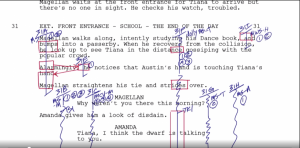Recently, I was tasked to address comments from a client on a video. It was already close to being done, however, it took longer than I expected to get their approval. I ended up sending over about 4 rough cuts within two weeks because the client wanted certain shots to be replaced within each one.
At MATTE, we use Wipster to not only keep a library of all our work and projects but to also share cuts with the clients. When a link is sent to them, they have the ability to comment directly on the video and on a certain timestamp. In this way, I knew exactly what shot they wanted replaced. At the same time, the account managers that have contact with the client are also told what changes they want to be made.
But, it came to a point where we were running out of b-roll to use. After giving them many options, they finally approved. In the end, every shot but one I replaced with did not make the final cut. They opted to completely remove the others and to extend the other clips to fill up the empty space. Although I am disappointed, it was exciting to work with a client. It was also satisfying to be able to take a video to the finish line.




